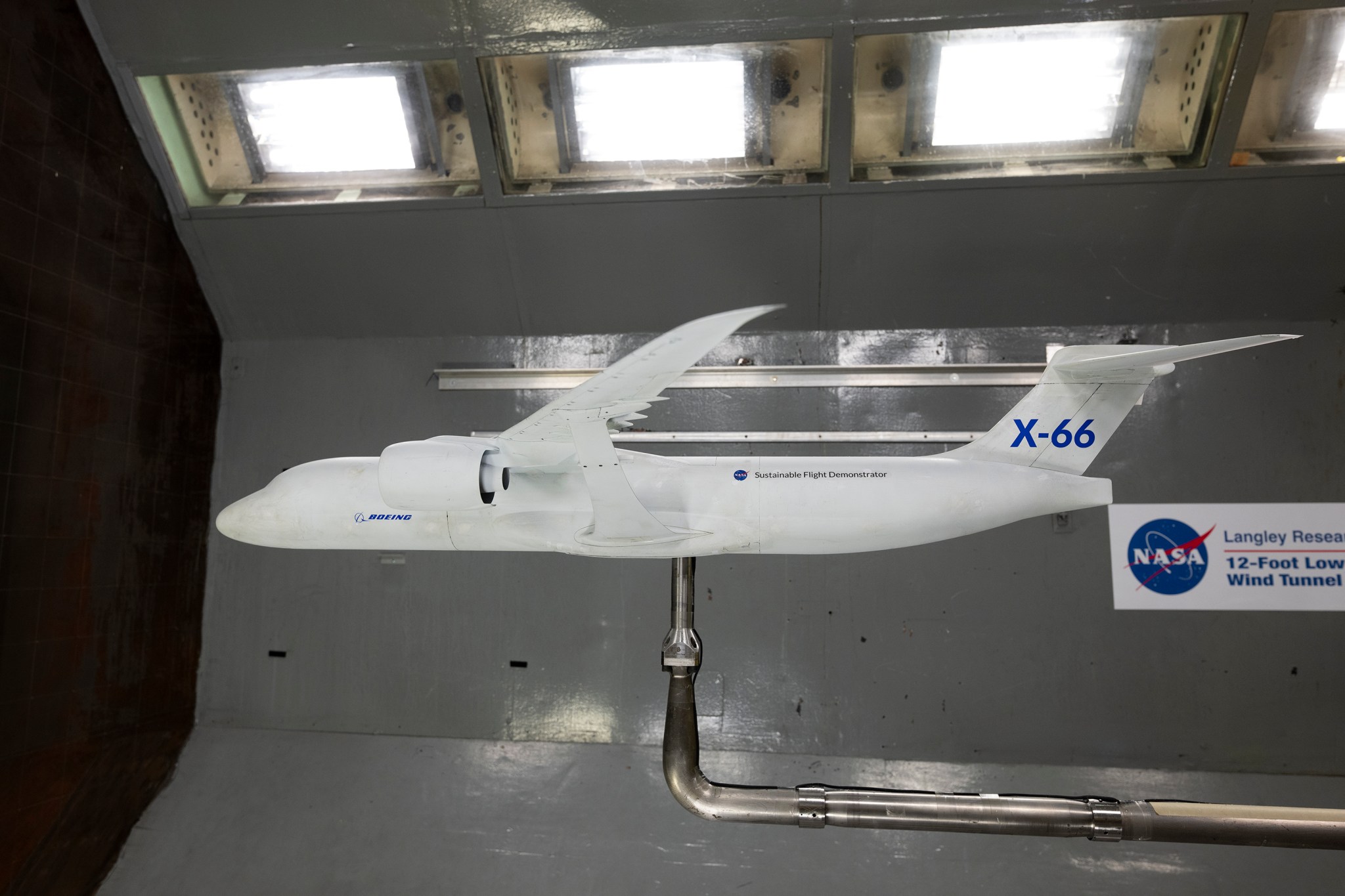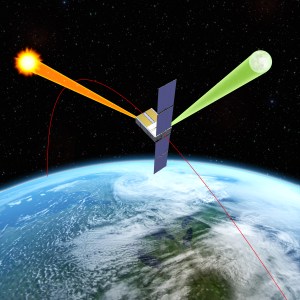
At NASA, each project has milestones to ensure everything stays on track. The agency’s Sustainable Flight Demonstrator (SFD) project recently passed through one of these markers of progress, as it completed a key phase of wind tunnel tests using a model of the X-66.
The X-66 is an experimental aircraft that aims to achieve more sustainable flight primarily through its wing design. Known as a transonic truss-braced wing, the concept combines extra-long wings stabilized with diagonal struts; a design that could result in a more fuel-efficient airliner. But before a full-size demonstrator version of the X-66 can fly, its team will need to perform tests involving several smaller models of the aircraft.
NASA’s objective with the recent wind tunnels tests is to validate the aerodynamics of the aircraft’s design.

The team conducted the testing using a model of the aircraft with a wingspan of almost 6 feet placed in the 12-Foot Low-Speed Wind Tunnel at the agency’s Langley Research Center in Hampton, Virginia. During the tests, the team captured measurements of forces such as lift and drag over many aerodynamic configurations and flight conditions.
Project team members are analyzing the data and using it to determine if design changes or adjustments are necessary for future wind tunnel tests. Ultimately, data from these tests will ensure the configuration is ready for high-speed wind tunnel tests in the next phase.
The SFD project is NASA’s effort to develop more efficient airframes as the nation moves toward sustainable aviation. The project seeks to inform the next generation of single-aisle airliners, the most common aircraft in commercial aviation fleets around the world. Boeing and NASA are partnering to develop the experimental demonstrator aircraft.




























